- Home
- James McBride
Miracle at St. Anna (Movie Tie-in) Page 5
Miracle at St. Anna (Movie Tie-in) Read online
Page 5
Driscoll sat up and told his orderly to summon Captain Rudden. Rudden was from Maine. He was one of the few captains in the division whom Driscoll trusted.
Rangy and tall, with a slow, careful manner and dark eyes that sucked in everything around him like bilge pumps, Rudden entered, followed by his first lieutenant, a man named Wells, a stocky colored man with a huge head and bug eyes that stared blankly. Several white captains had tried to make Rudden get rid of Wells—they were scared of him—but Rudden refused. “He’s the best first lieutenant in the division,” he boasted, which is why Driscoll liked Rudden. Rudden knew a good soldier when he saw one.
“Sir?”
“I got a report that Germans are planning a push down the Serchio Valley, through Lama di Sotto ridge. Two or three regiments.”
Rudden’s eyes widened. “Regiments?”
“You been running patrols back and forth over there. You hear anything about that?”
“No, sir. But G Company has a squad that’s probably sitting right on that area, sir.”
“What’s the state of G Company?”
“Shot to hell, sir. Twenty-four dead, forty-three wounded, plus they have a squad missing up in the Serchio Valley.”
“How many in it?”
“They went out as twelve, crossed the Cinquale Canal, and two came back, two wounded, four dead, and four missing, still on the other side of the canal. One of ’em’s a lieutenant.”
“Who’s the lieutenant?”
“Stamps is his name.”
Driscoll knew him. A good soldier. Cool and smart. Stamps had come out of the Army’s Advanced Special Training Program, which sent the smartest coloreds to Howard University for special training. It was a program the Army had started to raise the intelligence tests of the division, which were low, since only 40 percent of the colored draftees were literate. Driscoll had seen Stamps back at training camp in Arizona. The kid knew his business.
“Radio contact?”
“Yeah. Captain Nokes got them on the SCI-536 when we pushed across the Cinquale. They were on the other side and got just beyond Hill Maine near Strettoia, at the enemy weak point. They called for artillery fire, which might’ve pushed the Krauts back and collapsed their hold on the canal, but Nokes didn’t fire. Instead, he called them back.”
“Why the hell did he do that?”
“He couldn’t see them and didn’t believe they’d crossed, so they got hung up. I had F Company upstream about five hundred yards. It was pretty hot over there. There was a kid caught in crossfire. One of ’em grabbed the kid and ran up the mountain. Stamps and two others followed him. They’re gone now.”
“You got their names? Maybe one of ’em speaks German. We need some German prisoners to confirm this report. We need them badly.”
Rudden produced a sheaf of papers from his pocket and circled four names. He handed the list to Driscoll.
Driscoll took the list and said, “Get Nokes over here, and tell him to bring a squad with him. He sent ’em. He’ll get ’em.” He was furious at Nokes. The screwball had stayed back at the fire-control center to direct artillery while he sent his men into the canal. It was his choice, but a good captain like Rudden went with his men. Driscoll wished he’d been at the canal that morning instead of having to direct the attack from division headquarters. He would’ve pushed Nokes into the canal himself.
Rudden turned to leave just as General Allman entered. Driscoll flipped the report on his lap to the floor, rose, and saluted.
“Don’t bother,” Allman said. He wore an air of resignation on his face. “Don’t say a word. Don’t mention Parks to me one time. He’s a stupid bastard. He’s going to run for senator once this war is over, that’s all he thinks about. I told him we need more howitzers. I told him we need fire support. Trying to take a beach without securing the high ground above it! He did the same thing at the Rapido River and got the Thirty-sixth Infantry Division all shot up, and now he’s killing my colored boys, too. Goddamn bastard.”
Driscoll was silent. He waited a moment before asking, “Any word on your son?”
Allman’s face softened a moment, and Driscoll thought he saw a glint of despair shoot across the old man’s brow. The kid had been missing nine days. Just as quickly, Allman’s face straightened and he said, “None. Give me what you got on the canal.”
“Forget the canal for a minute. I just got a report from an Italian priest who says the Germans have two or three regiments on the other side of the Serchio Valley and are planning a push in ten days, at Christmas.”
Driscoll watched Allman’s eyes widen, then harden. The old man, Driscoll had to admit, was a tough old bastard. “Where is the priest now?” Allman asked.
“Sent him down to S-2 intelligence.”
“We got any corroboration?”
“Nothing. An aerial photo that looks pretty inconclusive. But a squad from G Company Three-seventy-one was over there and hasn’t come back. We had radio contact and lost it.” Driscoll said nothing about Captain Nokes’s not sending artillery fire behind the squad at the Cinquale. If Allman booted Nokes, he might get replaced by someone worse. If he had to continue protecting lizards like Nokes, Driscoll thought bitterly, the 92nd would never take central Italy, no matter how worn-out the Germans were.
Allman waved his hand. “If we listened to every report from the Italians, we’d still be back at Anzio. You sent a squad for ’em?”
“Done.”
“Try to raise ’em on the radio and tell ’em to get a German prisoner. Meanwhile we’ll gather tomorrow morning at oh-seven-thirty and lick our wounds. Let’s get some replacement officers so we can stay in position. We got boys up there melting away like butter. You see Miller’s report yesterday? They had ten guys heading back to the aid station helping one wounded who’d been shot in the foot. The next soldier doing that is court-martialed, understand?”
Driscoll nodded.
Allman turned on his heel. “I’m sick of it,” he muttered. “Sick of this melting-away crap. Bunch of sissies.” He walked out of Driscoll’s tent, so mad he forgot to take the report with him.
Driscoll decided not to press it on him. It could wait. Instead, he sat down and lit another cigarette, thinking of the aerial photo and the priest’s information. He wasn’t going to worry about another crisis, he decided. Intelligence wasn’t his job. Yet the photo bothered him, like an itch that can’t be scratched. The steady supply of German prisoners who were turning themselves in had suddenly diminished—gone down to zero—and that was a bad sign. If Driscoll was planning a big push, he’d do the same thing, make sure nobody got through to spread word to the enemy. They needed a German prisoner, badly. He looked over the list of names of the squad in the Serchio Valley: Negron, Cummings, Stamps, Train. His finger stopped at the last name. He did not know every draftee in the division, but he damn sure knew this one. This was the biggest Negro he’d ever seen in his life. He couldn’t forget him. He’d met him his first day at training camp, back at Fort Huachuca, Arizona.
It seemed like a million years ago. It was July, hot as hell, desert hot. Driscoll was standing in front of division headquarters and ordered the huge colored soldier standing nearby to take the supply truck parked out front over to the post quartermaster to draw rations for the newly arriving troops.
The giant Negro got into the two-and-a-half-ton truck, started it, and drove it directly into the building where Driscoll was standing. He damn near knocked it off its moorings.
Driscoll stormed out of the building, cussing the man up and down, ending with, “Where the hell did you learn to drive?”
The man looked apologetic. “I’m no driver,” he said. “I never drove nothing but a mule.”
Driscoll told the guy to move over, got in the truck, and drove it to the quartermaster’s himself. En route, he asked, “What’s your name, soldier?”
“Train.”
“First name or last?”
“My ma calls me Orange ’cause I likes ora
nges, but most calls me Train.”
Driscoll marveled at the man’s size. He was so big he had to crouch to fit into the cab of the truck. His hands looked like meat cleavers. They were clasped nervously in front of him. “You ready to say hello to Italy, Private Train?”
The huge man’s face crinkled. “Who’s Italy?”
Driscoll thought Train was joking, until he looked over and saw the man’s face was dead serious.
“I ain’t fussy ’bout meetin’ folks,” Train said nervously. “I never met no woman, though. Not for dating and jook joints and the like. Never had no girlfriend. If Italy’s a woman, maybe you could tell me what to say to her.”
Driscoll was astounded.
“Haven’t you seen a map of the world, soldier?” he asked.
The giant looked out the window as the barracks spun past him, building after building, and beyond it hot, white desert. “The world is a big place,” Train said softly. “It seem too big to fit on one piece of paper.”
Sitting in his tent outside the Cinquale Canal, Driscoll set down the list with the four names on it. No doubt about it. That was him, the giant he’d met that first day in camp. The guy who said the world was too big to fit on one piece of paper.
Too bad, he thought bitterly. The big galoot was sitting in the path of twelve thousand Germans and couldn’t even read a map. He hoped the information he had was wrong. If it wasn’t, he felt sorry for the poor bastard.
5
THE STATUE HEAD
The statue head that Sam Train found on the bank of the Arno River in Florence and carried into battle began its life as a chunk of rock in a marble mountain in 1590 in the town of Carrara, forty miles northwest of Florence. A marble worker named Filippo Guanio, dangling precariously from a rope strung from the top of the mountain, chiseled a long, straight line down a ten-foot outcropping and attached fourteen metal loops to the rocks. He was pulled up to the top of the mountain by his fellow workers, walked twenty feet over, then descended again, chiseling another line ten feet long and attaching fourteen more metal loops. He then worked his way twenty feet across the bottom, attaching twenty-two metal loops, forming a ten-by-twenty-foot box. He then strung a long, thick rope through each loop so they all were connected and formed a kind of cradle. With five other men, he carefully chipped away at chiseled lines near the loops until the big piece of rock broke loose and dangled freely from the mountain, held by only a single thick rope, and bounced precariously against the ledges while six men and two mules at the top of the mountain hung on for dear life to keep it from falling to earth. The men at the top were successful in defying gravity; the piece did not fall, but it bounced along the side of the ridge like a pendulum, tapping lightly with deep booms as it swung back and forth. Unfortunately for the workers who had freed the piece in the first place by hammering at the chiseled lines, there was no one available to pull them to the top since everyone up there was straining to the last muscle and was dreadfully occupied, to say the least. They were on their own, still suspended by ropes and clinging to the sides of the mountain, and as the piece bounded wildly out of control, they desperately scrambled to get out of the way. Filippo saw the chunk coming and frantically tried to move, but the huge piece hit another outcropping of rock and skittered crazily, losing its rhythm and bounding high. It swung wide of the mountain, then blocked out the sunlight as it came down and caught his arm, crushing it and ripping it away. The arm, still clothed in Filippo’s sweater from shoulder to hand, dangled from the giant rock as it bounded away—it was as if the giant hunk of marble had deliberately grabbed the arm for itself—before it dropped to the side of the mountain below, where it landed in a pile of marble rubble, never to be found. Only then was Filippo, the nerve endings of his arm dangling jagged and bleeding from its socket, hastily hauled up to the top. He received an extra three hundred scudi and four bottles of wine from the mine’s owner for his troubles that day, and went back to work two months later as a mule skinner.
The huge marble stone was lowered to the ground and placed on the back of a wagon, then carted eighty miles north to the port city of Genoa by twelve mules and a team of drivers. There, it was placed aboard a ship bound for France, where it was unloaded in La Rochelle and taken by another mule train to the studio of a starving French sculptor named Pierre Tranqueville, who had been commissioned by a duchess de’ Medici, wife of the Duke of Florence, to carve one of four statues that would sit atop each corner of the Ponte Santa Trinità,the most beautiful bridge in Florence, whose looping curved arches conform to no line or figure in geometry and are believed to have been drawn free hand by a linear genius, rumored to be Michelangelo. The duchess wanted each statue to represent a season. She assigned the “summer,” “winter,” and “fall” statues to Italian sculptors. Tranqueville, who was commissioned to do spring—primavera in Italian—was the only Frenchman. The duchess chose him because he was recommended—indirectly—by one of her chamber-maids whom Tranqueville happened to have had the good fortune to pork on his one visit to Italy, when he’d scraped up enough money to visit the great marble statues created by Michelangelo, of whom everyone had heard. The chambermaid had recommended him to the duke of nearby Barga, whom she happened to have had the good fortune to pork on several occasions, and who in turn recommended him to the duchess, in order to show the lovely chambermaid how much sway he had with Her Highness.
The commission was the biggest of Tranqueville’s young life, and he worked on the statue like a slave for four years, during which time his wife died, his mistress left him, and his only daughter ran off with a painter at the age of fourteen. Tranqueville cursed the statue every day, because despite the size of the commission, he became convinced that the statue that was to bring him fame and fortune had instead brought him only bad luck. Still, he slaved on. His money ran out, his creditors were breathing down his neck, his landlord waited in the wings to evict him, but Tranqueville worked without pause. When the gorgeous piece was finally completed, Tranqueville sent it back to Italy via the same route of mules and men, along with a gracious note to the duchess, thanking her for her generosity and hoping that his piece was the best of the four she had commissioned. Not receiving a swift reply and being flat broke, having taxed all his resources, soul, and savings, he became disconsolate and heartbroken, feelings which later gave way to rage. Two months after shipping the Primavera to Florence, Tranqueville stabbed his former mistress to death, flung his daughter’s husband off a cliff, beat his daughter so senseless that for months afterward she had to eat food chewed for her by a nursemaid, then took his own life by swallowing a towel.
The statue, in the meantime, was the toast of Florence. It was mounted on the bridge with the three waiting others and drew flocks of admirers, even peasants, who commented that the Primavera’s tragic beauty—her long neck, the graceful curves of her shoulders, the swoop of her luscious arms, and her beautiful, shy head tilted forever downward—connoted the deep secrets of a woman’s heart as well as the purity of spring for which the statue was named, and the lovely countenance of a young maiden’s ever expectant soul awaiting love in the fresh bloom of youth. The duchess, who had secretly harbored some reluctance about hiring a foreign artist, was now so delighted she took several weeks to decide what kind of remuneration to offer the unknown but gifted French sculptor. She finally decided on a commission of four statues for the nearby Ponte Vecchio, which paralleled the Santa Trinità on the Arno River, along with a generous commission to create any five statues of herself in marble that the artist pleased.
The letter bearing this good news from the duchess was sent to Tranqueville wrapped in Chinese silk and scrolled paper edged in gold, with forty-eight gold pieces tucked inside. It arrived nine days after Tranqueville had stuffed the towel down his throat, just as his creditors and landlord were arriving at his studio to clear out his belongings and decide what to do with his daughter, who was homeless, husbandless, and currently living in the back of his studio with an old peas
ant woman who fed her chewed bread and watery soup twice a day. The creditors and the landlord split fourteen gold pieces among themselves and awarded the rest to Tranqueville’s daughter, who though unable to make much sense of the proceedings and the flush of activity that suddenly blossomed around her, was quite happy to receive chestnut soup and chewed wild boar for her twice-daily meals as opposed to crusty, day-old bread covered with the crusty hag’s spit. The remaining gold pieces were enough to take care of her for the rest of her days, which, unfortunately, would number very few.
When word of Tranqueville’s death reached Italy, the duchess was distraught. She had had no idea of the dire poverty the artist had been living in, and insisted that had she known she would have sent for him immediately and given him a place at her side as a royal artist in her court. She sent enough gold bullion to Tranqueville’s daughter in La Rochelle to feed an entire village for a year, then took to her bed in grief for several days, disheartened that her one great artistic discovery had taken his own life before she could introduce his genius to the world at large—and thus immortalize herself in the process, since her future plans for him included several busts of herself.

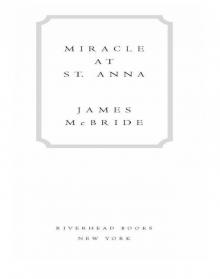 Miracle at St. Anna
Miracle at St. Anna The Good Lord Bird
The Good Lord Bird Song Yet Sung
Song Yet Sung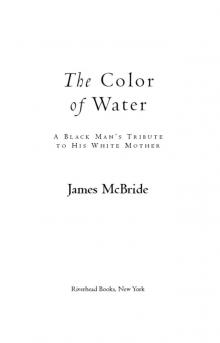 The Color of Water
The Color of Water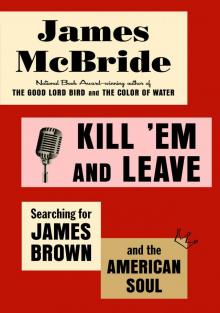 Kill 'Em and Leave
Kill 'Em and Leave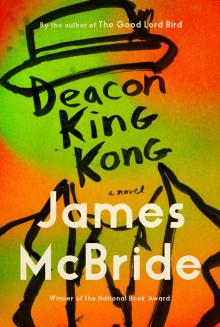 Deacon King Kong
Deacon King Kong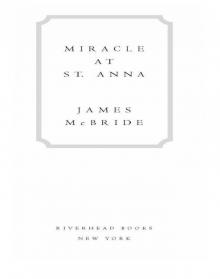 Miracle at St. Anna (Movie Tie-in)
Miracle at St. Anna (Movie Tie-in)